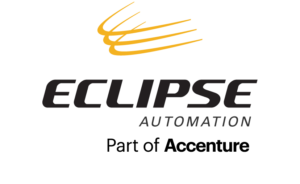

Jason Bosscher, Managing Director, Industry X at Accenture
Gone are the days when manufacturing companies would place an order for automated systems and patiently wait a year or more for delivery. In today’s hyper-competitive landscape, the expectation for rapid deployment has become the new normal across virtually every business sector. This acceleration is, if anything, even more pronounced in manufacturing automation, where stakes and expectations are high, and the margin for error is vanishingly small.
In This Article
- Manufacturing companies face unprecedented pressure to deliver automation projects quickly due to just-in-time mindsets, competitive pressures, and immediate value creation expectations
- Common obstacles include technical debt from heterogeneous systems, digital skills gaps, and cultural divides between tech-savvy and traditional workers
- Ambitious timelines can amplify project stress, leading to quality compromises and project failures
- Successful automation providers use vertical integration, co-creation approaches, and advanced engineering services to maintain quality while accelerating delivery
Why Speed Has Become Non-Negotiable in Manufacturing
The manufacturing sector’s urgency around automation delivery stems from several converging factors that make delayed implementation particularly costly. Unlike other industries where delayed technology adoption might simply mean missed opportunities, manufacturing delays translate directly into lost competitive positioning and immediate revenue impact.
Substantial capital expenditures make sense when automation solutions are genuinely needed, but this willingness often comes with the expectation of immediate implementation. The “just-in-time” philosophy that defines much of modern manufacturing has fundamentally reshaped management thinking: once a decision is made, every day of delay represents lost potential value creation.
International competition has intensified this pressure as well. Companies that move first to implement advanced automation can capture greater market share and establish sustainable competitive advantages. As product lifecycles get shorter and customer expectations rise, being late to automation can mean being permanently left behind. Perhaps most significantly, we’re in an era of societal expectations for immediate gratification. The same forces that have transformed consumer expectations in e-commerce and digital services have permeated B2B manufacturing relationships. Clients simply won’t accept that complex projects must take years to deliver.
When Ambition Meets Reality: Common Obstacles to Fast Delivery
While many companies develop ambitious automation plans, they frequently encounter obstacles that can derail even well-intentioned projects. The root causes often trace back to fundamental infrastructure and organizational challenges that become magnified under compressed timelines.
- Tech-related “cultural” divides. Tensions between tech-savvy and traditional manufacturing workers can create friction during fast-paced implementations. While they tend to resolve naturally over time, they can become serious obstacles when teams are under pressure to deliver quickly.
- Technical debt. Many manufacturers have accumulated heterogeneous tools and systems across different plants and time periods, which create integration challenges that become even more complex when projects must be delivered quickly. What might be manageable obstacles during a leisurely implementation can become project-stoppers when speed is paramount.
- Digital skills. Many manufacturers still struggle with uneven digital fluency among their workforce. While this skills divide might be bridgeable over time, compressed schedules often don’t allow for the comprehensive training and change management that successful automation requires.
Maintaining Quality Under Pressure: Proven Approaches
The fundamental question becomes: how can automation providers deliver exceptional results while working under time pressure? The answer lies in rethinking traditional project approaches rather than simply trying to accelerate existing methodologies.
Co-creation has emerged as an effective strategy for accelerating time-to-market without sacrificing quality. Leading automation providers now work collaboratively with clients from the earliest conceptual stages, which allows construction to begin while final product specifications are still being refined, compressing overall project timelines.
Digital technologies have shown great promise at streamlining co-creation, allowing providers and customers to collaborate closely throughout the design and development phase, reducing delays. Using Omniverse, for example, Eclipse is able to ship a digital replica of a machine before the physical one does, allowing more meaningful participation and feedback from customers early enough in the process to have real impact, at lower cost, and without losing time.
Modern automation projects increasingly embrace parallel development streams rather than sequential phases. It’s becoming common practice to begin building production lines while the final product design is still being tweaked. This requires sophisticated project management and excellent communication, but it can reduce overall delivery times by months.
Eclipse’s Approach: Vertical Integration and Advanced Engineering
Eclipse Automation brings several unique capabilities that enable rapid delivery without quality compromises. Our vertical integration approach and comprehensive database capability allows us to maintain oversight and monitor quality across every phase of a project, rather than leaving quality assurance until final testing. This comprehensive visibility enables us to catch potential issues early in the process, when they’re easier and less expensive to resolve.
This integrated approach becomes particularly valuable under compressed timelines. When projects are moving quickly, small issues that might seem insignificant can cascade into major ones if not addressed immediately. Vertical integration ensures that nothing falls through the cracks, even when multiple workstreams are progressing simultaneously.
Our Advanced Engineering Services are another critical differentiator. From the earliest stages of project conception, customers get a clear roadmap for investment and options with trade-offs for key opportunities, helping them envision not just how a project is likely to proceed, but what alternatives might be available and how those affect the outcome.
Working together, this lets us uncover potential efficiency gains and potential risks before they impact project timelines. This upfront investment in thorough planning and risk assessment allows us to move much more quickly during implementation phases while maintaining our quality standards.
The key insight is that speed and quality aren’t necessarily opposing forces in automation projects. With the right approaches, methodologies, and expertise, it’s possible to deliver both. The companies that master this balance will be the ones that thrive in manufacturing’s increasingly fast-paced future.

Get in touch to explore how our Advanced Engineering Services can help you move faster without compromising results.
